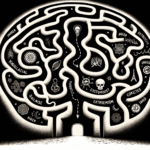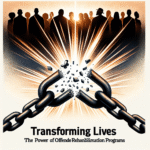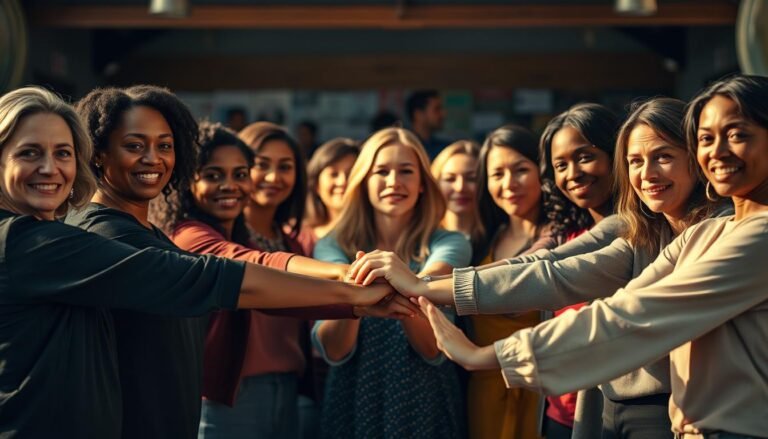
Introduction
In a world where the conversation around gender is continually evolving, understanding the concept of non-binary identities becomes increasingly important. "Non-Binary 101: What You Need to Know About Gender Diversity" serves as your ultimate guide through this complex terrain. Non-binary individuals, who identify neither exclusively as male nor female, represent a significant and often misunderstood portion of the population. As society progresses, recognizing and supporting gender diversity is vital for fostering inclusion, community, and personal empowerment.
This article aims to break down the basics of non-binary identities, explore the rich array of gender diversity, share relevant case studies, and answer common questions. Let’s embark on this enlightening journey together!
Understanding Gender Diversity
What is Gender?
Gender is a multifaceted concept that transcends the traditional binary classification of male and female. While often conflated with biological sex, gender is more about individual identity and societal roles. It encompasses a range of identities, including male, female, transgender, genderqueer, agender, and non-binary, among others.
Defining Non-Binary
Non-binary refers to individuals who do not identify strictly as male or female. Instead, they may embrace aspects of both genders or feel like their gender exists outside the male-female binary. Non-binary people might use various terms to describe their gender identities, such as genderqueer, genderfluid, or bigender. Understanding these terms is crucial because they highlight the diversity within non-binary identities.
The Spectrum of Gender Identity
Visualizing gender as a spectrum can help clarify non-binary identities. This chart illustrates how gender can encompass a diverse range of identities:
| Gender Identity | Description |
|---|---|
| Male | Identifying strictly as male |
| Female | Identifying strictly as female |
| Non-Binary | Not exclusively male or female |
| Genderqueer | Rejecting the binary categorization altogether |
| Genderfluid | Shifting between genders depending on circumstances |
| Agender | Identifying as having no gender |
| Bigender | Identifying as two genders |
The Importance of Language and Pronouns
Using Correct Pronouns
Language plays a pivotal role in validating an individual’s identity. Non-binary people may use a variety of pronouns, including they/them, he/him, she/her, or even neopronouns like ze/hir. It’s crucial to ask and respect people’s pronouns to create an inclusive environment.
Case Study: Taylor’s Experience
Taylor, a non-binary individual, found that using they/them pronouns significantly impacted their sense of acceptance. At first, they faced resistance at work, but after a company-wide training on gender diversity, colleagues became more supportive. As more people learned about the significance of correct pronoun usage, Taylor reported feeling more confident and engaged in their workplace.
Real-World Applications: Gender Diversity in Society
The Rise of Non-Binary Visibility
In recent years, non-binary visibility has surged. Social media platforms, pop culture, and activism have all contributed to raising awareness about non-binary identities. This visibility not only impacts societal attitudes but also helps non-binary individuals feel less isolated.
Case Study: Influencers and Activism
Social media influencers like Alok Vaid-Menon have been instrumental in advocating for non-binary rights, challenging traditional gender norms, and fostering understanding. Their work exemplifies how individuals can leverage platforms to bring awareness to gender diversity.
Impact in Professional Settings
Many organizations are now adopting gender-inclusive policies. For instance, some companies allow employees to include their pronouns in their email signatures and staff directories, promoting a culture of respect and inclusivity.
Table: Gender-Inclusive Practices in the Workplace
| Practice | Description |
|---|---|
| Pronoun Training | Workshops to educate staff on the importance of pronouns |
| Inclusive Policies | Guidelines that support non-binary identification and recognition |
| Safe Spaces | Creating environments where everyone feels validated and acknowledged |
Embracing Gender Diversity
Intersectionality
Understanding non-binary identities requires awareness of intersectionality—the interconnectedness of societal categorizations like race, class, and sexuality. Non-binary individuals might also belong to various ethnic, cultural, or social groups, influencing their experiences and challenges.
Case Study: Accessing Healthcare
For many non-binary individuals, accessing healthcare can be fraught with barriers. A study by the National Center for Transgender Equality revealed that 23% of non-binary individuals reported being refused care based on their gender identity. These statistics highlight the need for healthcare providers to adopt more inclusive practices.
Common Misconceptions
"Non-Binary is Just a Phase"
One common misconception is that non-binary identities are a phase. Many non-binary individuals have expressed that their identity has been a long-standing aspect of who they are, even if they only recently found the language to express it.
"Non-Binary People Just Want Attention"
Another pervasive stereotype is that non-binary individuals seek attention through their identity. This misconception diminishes their authentic experiences and fails to acknowledge the discrimination and challenges they often face.
Supporting Non-Binary Individuals
Listening and Educating
The best way to support non-binary people is to listen to their experiences and continuously educate yourself. Participate in workshops, read literature on gender diversity, and engage in respectful conversations.
Advocacy
Supporting initiatives aimed at increasing awareness of gender diversity is crucial. This includes advocating for policies that promote inclusivity in schools, workplaces, and communities.
Conclusion
In conclusion, embracing the concept of non-binary identities is essential for fostering a more inclusive society. "Non-Binary 101: What You Need to Know About Gender Diversity" underscores the importance of understanding and respecting diverse gender identities. By recognizing the spectrum of gender and engaging in conversations about non-binary identities, we can create an environment that validates and empowers everyone.
Actionable Takeaway
Take the time to learn about someone’s identity and experiences. Your efforts to understand and respect non-binary individuals can significantly impact their comfort and sense of belonging.
FAQs
1. What does it mean to be non-binary?
Non-binary individuals do not identify strictly as male or female and may embrace aspects of both or neither gender.
2. How can I support non-binary friends or family members?
Respect their identity and pronouns, educate yourself on gender diversity, and engage in open, respectful dialogues.
3. Are non-binary identities recognized legally?
The recognition of non-binary identities varies by region. Some places allow individuals to identify as non-binary on documents such as driver’s licenses and passports.
4. What are neopronouns?
Neopronouns are alternative pronouns beyond the traditional he/she/they, such as ze/hir or xe/xem. They provide additional options for individuals who feel traditional pronouns do not reflect their identity.
5. How can workplaces be more inclusive for non-binary individuals?
Workplaces can foster inclusivity by implementing gender-inclusive policies, offering pronoun training, and creating safe spaces for discussions around gender diversity.
Through awareness, empathy, and advocacy, we can work toward a future that celebrates and honors the rich tapestry of human gender diversity.

















